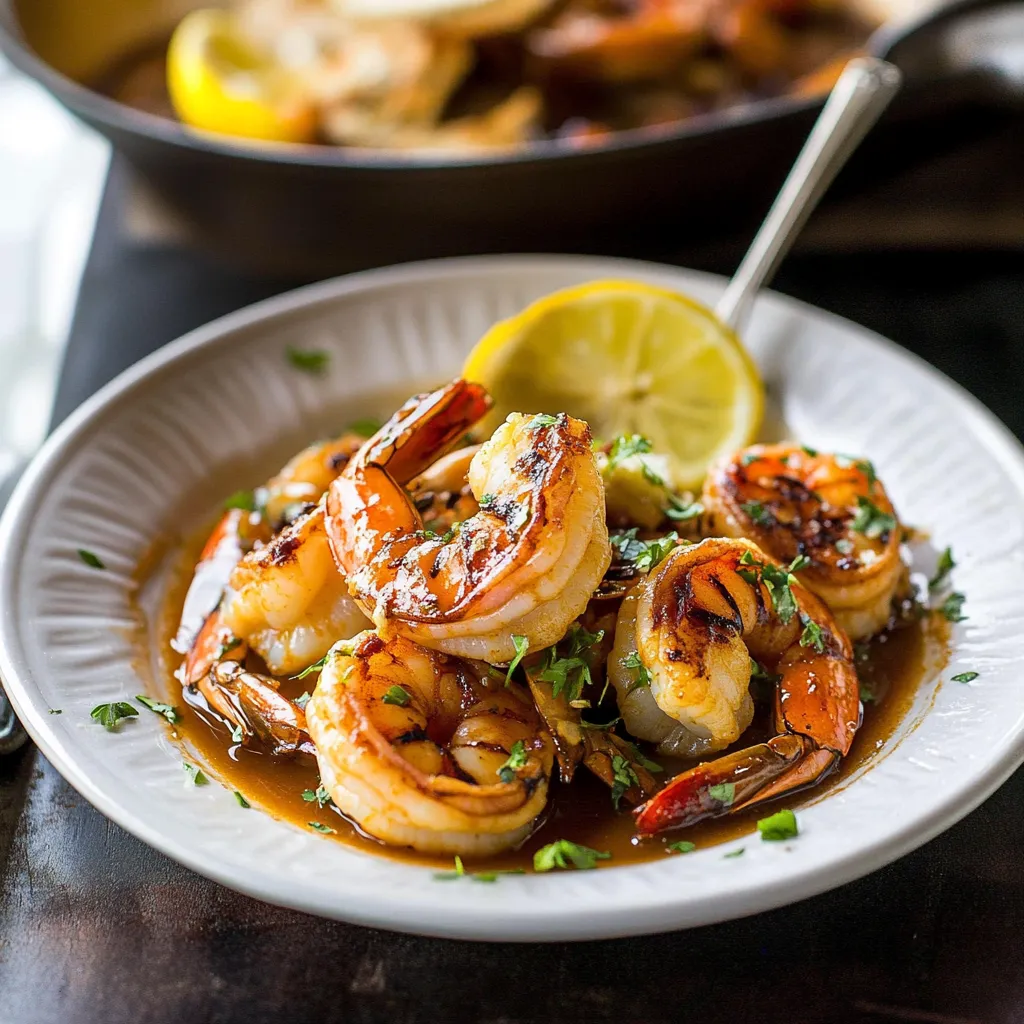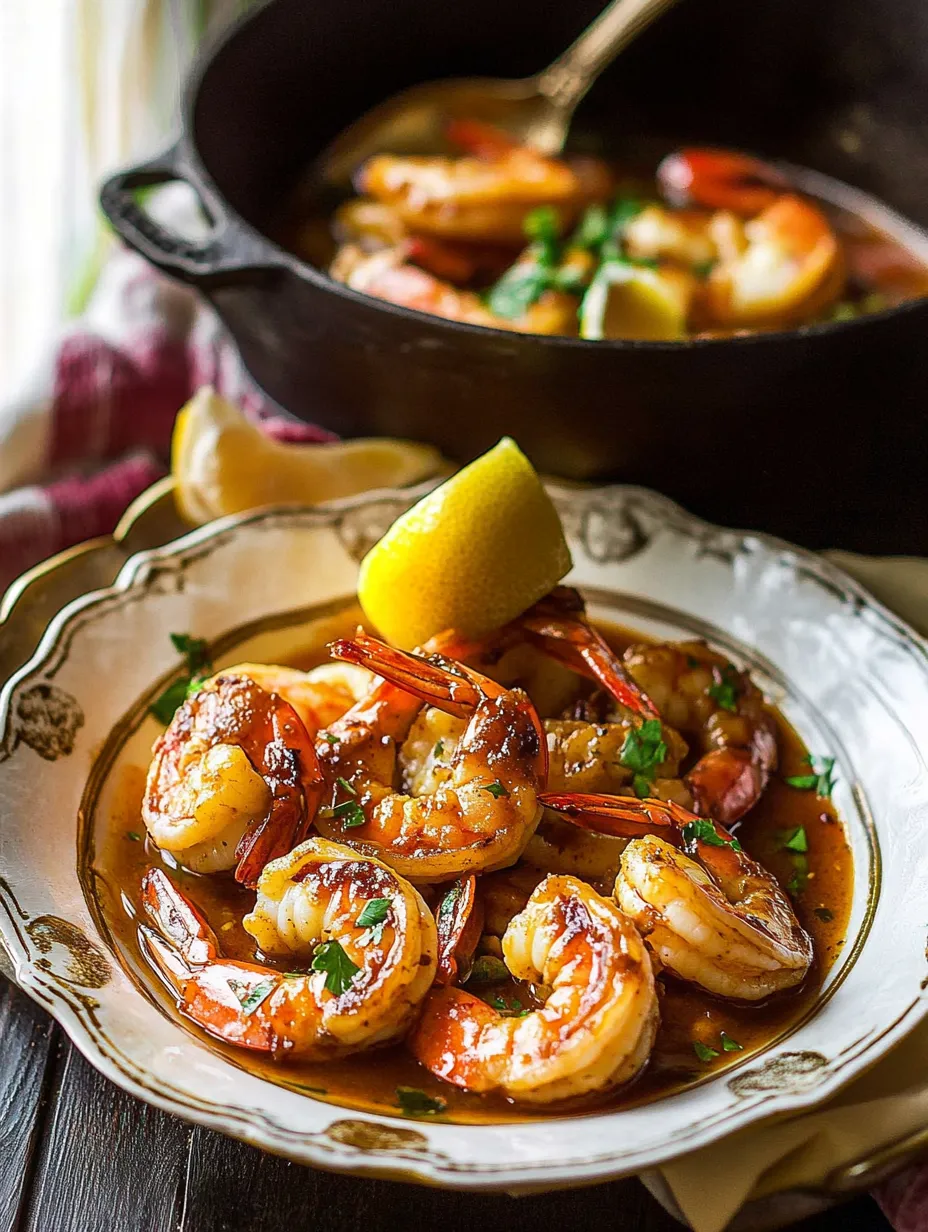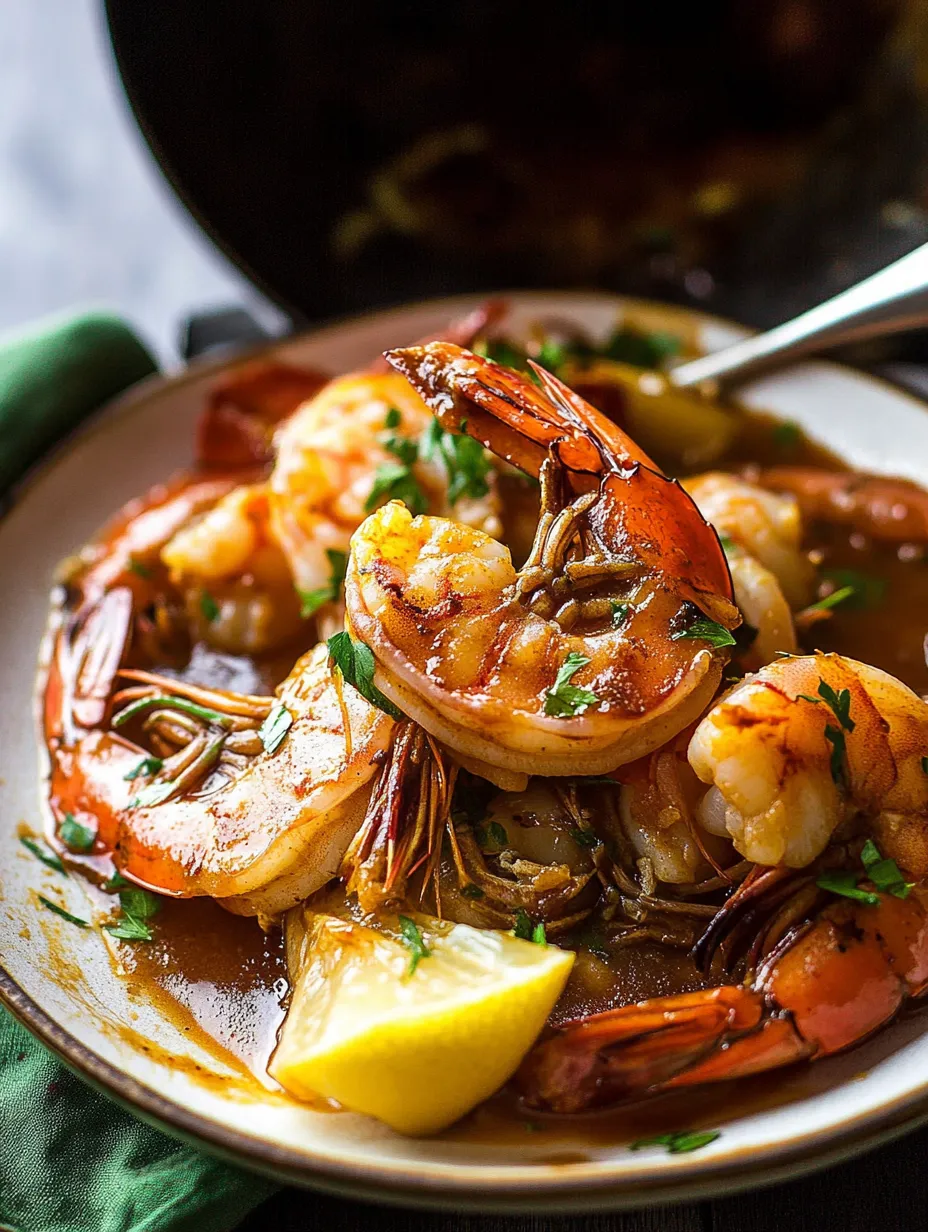 Save
Save
This buttery New Orleans BBQ Shrimp recipe has been my secret weapon for dinner parties for years, delivering restaurant-quality flavor in just 20 minutes. Despite the name, there's actually no barbecue sauce involved—just a rich, garlicky butter sauce that Louisiana natives have perfected over generations.
I first made this for friends during Mardi Gras season, and the silence that fell over the table as everyone sopped up the sauce with crusty bread told me everything I needed to know. Now it's requested at nearly every gathering I host.
Ingredients
- Worcestershire sauce provides that umami depth that forms the backbone of this dish
- Amber beer adds complexity and mild sweetness that enhances the sauce
- Fresh garlic delivers essential aromatic flavor that permeates the shrimp
- Bay leaf and rosemary contribute subtle herbal notes that balance the richness
- Cajun seasoning brings authentic Louisiana flavor look for varieties lower in salt
- Large shrimp preferably wild-caught Gulf shrimp for the sweetest most authentic flavor
- Cold butter is the star ingredient cut into cubes for proper emulsification
- Fresh lemon both wheels and juice provides brightness to cut through the richness
- Scallions and parsley add fresh color and a mild oniony finish
Step-by-Step Instructions
- Create The Flavor Base
- Combine Worcestershire, beer, garlic, bay leaf, rosemary, Cajun seasoning, black pepper, and hot sauce in a large sauté pan. Bring everything to a boil to marry the flavors and reduce slightly, about 2 minutes. This creates the concentrated flavor foundation that will eventually become your sauce.
- Cook The Shrimp
- Add shrimp and lemon wheels to the boiling mixture, tossing to ensure each shrimp gets coated. Cover the pan and cook just until shrimp turn pink and opaque, about 3 minutes for large shrimp or 5 minutes for jumbo ones. Watch carefully as overcooked shrimp become tough and rubbery.
- Create The Butter Sauce
- Turn off the heat completely and add lemon juice. Immediately begin adding the cold butter cubes, stirring constantly. The residual heat will slowly melt the butter, creating a velvety emulsified sauce rather than a broken, oily one. This technique is crucial for achieving that restaurant-quality consistency.
- Finish And Serve
- Taste the sauce and adjust with salt and additional lemon juice if needed. Transfer everything to a serving dish, making sure to pour all that glorious sauce over the shrimp. Sprinkle with fresh scallions and parsley. Serve immediately with plenty of crusty French bread for sauce-sopping.

My grandmother from Louisiana taught me this recipe, insisting that the butter must always be cold and added off-heat. She would serve this every Christmas Eve, and the smell of garlic and butter filling the house signaled the holiday had truly begun.
Choosing The Right Shrimp
When shopping for shrimp for this recipe, size matters. Opt for large shrimp labeled 16-20 count or larger (the number refers to approximately how many shrimp you get per pound). While traditional New Orleans-style uses head-on, shell-on shrimp for maximum flavor, I understand the convenience of peeled shrimp for everyday cooking. The most important factor is sourcing wild-caught American Gulf shrimp if possible, which have a sweeter flavor and firmer texture than imported varieties.
Make-Ahead Options
This dish is best served immediately after cooking, but you can prep ingredients ahead of time to make dinner a breeze. Measure out all sauce ingredients and store in a container in the refrigerator up to 24 hours ahead. Cube the butter and return to the refrigerator. Clean and devein the shrimp if needed (keeping shells on if desired). When ready to cook, the entire dish comes together in just 10 minutes of active cooking time.
Serving Suggestions
While crusty French bread is the traditional and essential accompaniment to soak up the buttery sauce, you can round out the meal in several ways. Serve over white rice or cheese grits for a heartier meal that captures every drop of sauce. A simple green salad with a light vinaigrette provides a refreshing contrast to the rich main dish. For a true New Orleans experience, start the meal with a cup of gumbo and end with bread pudding for dessert.
The History Behind The Dish
Despite its name, New Orleans BBQ Shrimp didn't originate on a barbecue grill at all. The dish was created in the 1950s at Pascals Manale Restaurant in New Orleans when a regular customer tried to describe a dish he had enjoyed on a business trip. The chef created this butter-based shrimp dish that bears no resemblance to barbecue but became an instant classic. The name has stuck despite the confusion it sometimes causes for those expecting a tomato-based sauce. The combination of butter, Worcestershire, and Creole spices has become one of the citys most beloved culinary treasures.

Recipe FAQs
- → Why is it called BBQ shrimp when there's no barbecue sauce?
Despite its name, New Orleans BBQ Shrimp doesn't involve barbecue sauce or grilling. The name refers to the rich, flavorful butter sauce that the shrimp are cooked in, which has a deep color and bold flavor profile from Worcestershire sauce, Creole seasonings, and beer. The dish originated in New Orleans restaurants and the name has stuck despite not involving traditional barbecue methods.
- → Can I use peeled shrimp instead of unpeeled?
Yes, you can use peeled shrimp, although the traditional preparation uses unpeeled, head-on shrimp for maximum flavor. The shells and heads add richness to the sauce. If you prefer easier eating, peeled shrimp work fine, but try to find wild-caught American Gulf shrimp for the best flavor and texture.
- → What can I substitute for the beer?
If you want to avoid alcohol, you can substitute the beer with shrimp stock, chicken stock, vegetable broth, or even plain water in a pinch. Each will provide a slightly different flavor profile, but the dish will still be delicious with the other seasonings and butter.
- → What's the best bread to serve with this dish?
Crusty French bread is traditional and ideal for sopping up the flavorful butter sauce. A fresh baguette or other crusty artisan bread works perfectly. The bread is an essential component of the meal, as the sauce is considered by many to be the star of the dish.
- → How do I know when the shrimp are perfectly cooked?
Properly cooked shrimp should be pink, opaque, and slightly curved into a C-shape. If they curl tightly into an O-shape, they're overcooked. Depending on their size, they typically need only 3-5 minutes covered in the simmering liquid. Watch them closely as they cook quickly, and remove from heat as soon as they turn opaque to prevent them from becoming tough.
- → What makes the sauce so creamy without using cream?
The velvety texture comes from the emulsion created when cold butter is added to the hot liquid off the heat. The cubed butter slowly melts and combines with the cooking liquid to create a rich, emulsified sauce. The key is adding cold butter (not melted) after removing the pan from heat, and stirring continuously until fully incorporated.
